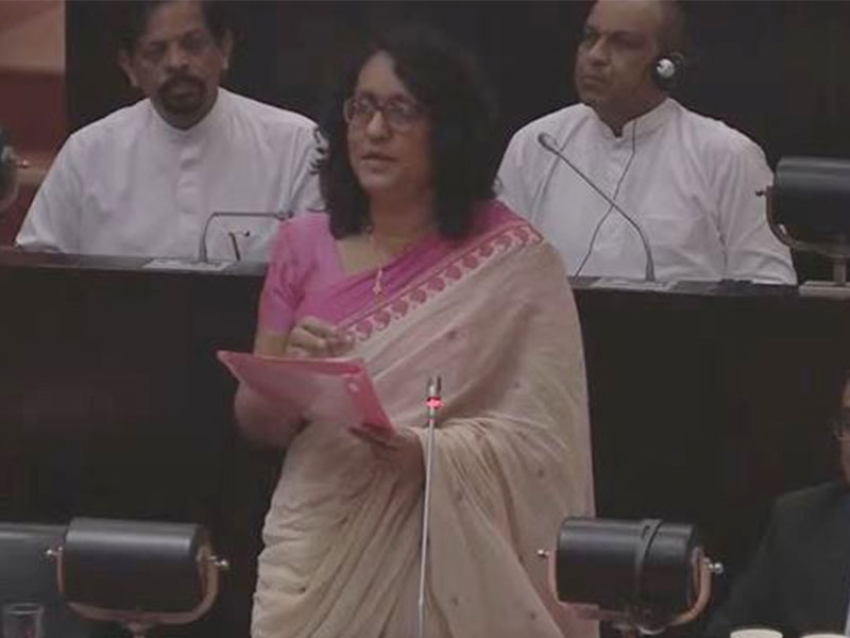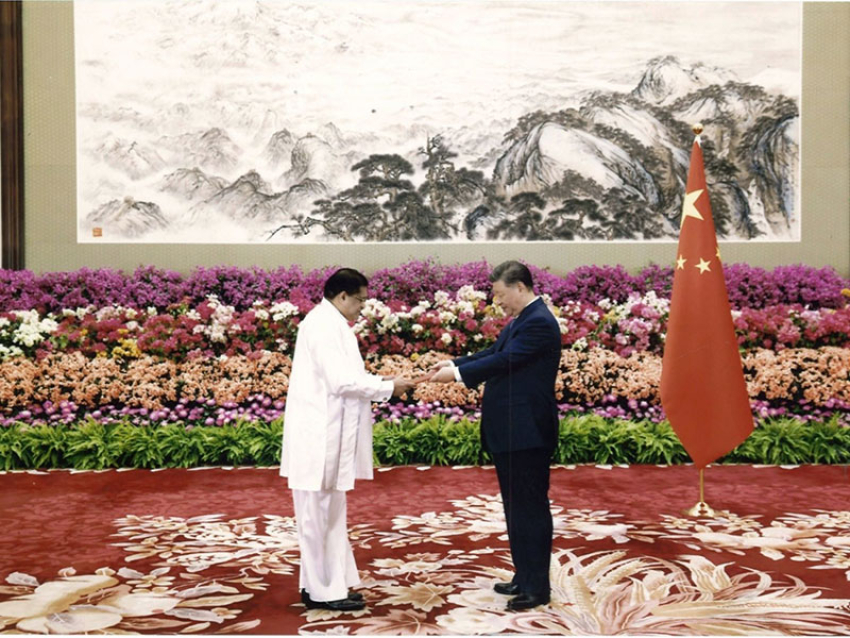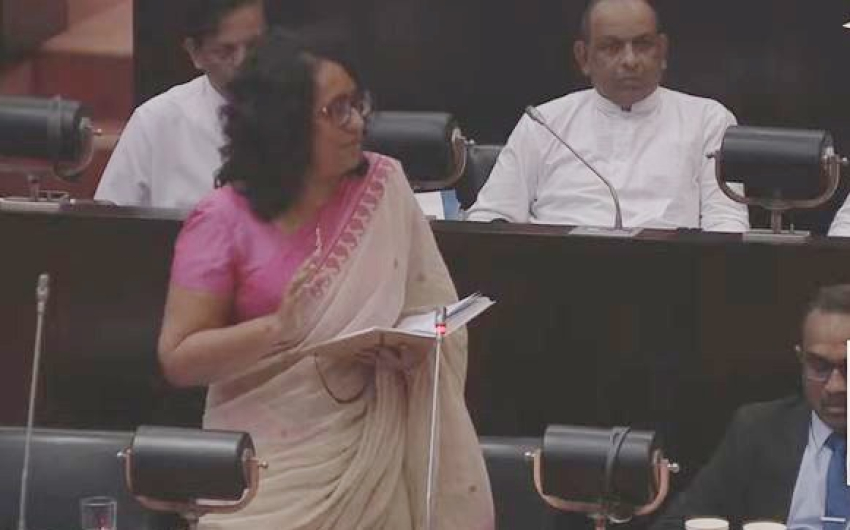Chile’s desiccated Atacama Desert was once considered a dead zone, but it hides great riches that could help us tackle a major threat to human health.
By Tom Garmeson
13 September 2019
Staring out across the desolate landscape of Valle de la Luna, the idea seems counter-intuitive.
What could the world’s driest desert, home to some of the most extreme levels of ultraviolet radiation on Earth, have to do with fighting disease? But as Michael Goodfellow, a microbiologist at Newcastle University, explains, the Atacama Desert’s inhospitality is exactly what could make it useful to us.
“The premise was that since the conditions are so harsh in the Atacama Desert, organisms become adapted to those conditions,” he says. Goodfellow hoped that if bacteria had managed to survive in such a hostile environment, they would likely produce novel chemical structures which could have important medical applications.In 2008, he was handed a soil sample taken from the desert’s hyper-arid core, parts of which are thought to have experienced virtually no rainfall for millions of years and were once considered beyond the dry limit for life. “Quite frankly, we didn’t expect to isolate anything,” Goodfellow admits. But to his surprise, he was able to grow a diverse population of bacteria from the sample, sparking a decade of research into the desert’s microbial fauna.
New species of bacteria are being unearthed in the Atacama desert that could help us fight back against the spread of drug resistant infections (Credit: Tom Garmeson)
It was the type of bacteria living in the Atacama that proved particularly exciting: a spore-producing phylum named actinobacteria. In microbiology circles, actinobacteria are renowned for their ability to secrete organic chemical compounds known as secondary metabolites, which help them fend off rival microbes.
Take streptomyces griseus, for example, a species of actinobacteria you might find in a handful of garden soil. A sample of streptomyces, when placed in a colony of mycobacterium tuberculosis, will release a chemical which stops its bacterial neighbours from growing the proteins they need to survive. When scientists at Rutgers University managed to isolate this chemical in 1944, they had chanced upon the first antibiotic treatment for tuberculosis, saving countless lives in the process.
A total of 46 new molecules have been isolated from Atacama bacteria so far, many of which show antibiotic, antiviral or anticancer properties
The new species of desert actinobacteria studied by Goodfellow and others have proven to be capable chemists themselves. A 2018 review counted a total of 46 new molecules that have been isolated from the Atacama strains so far, many of which show antibiotic, antiviral or anticancer properties. While Goodfellow stresses that there aren’t any solid drug leads yet, the results show the desert is a promising place to search for antibiotics.
Life at the edge
The Atacama is a prime example of what scientists have dubbed the “extremobiosphere” – areas of the world where factors such as high aridity, UV radiation, pH or pressure have pushed life to the limit. Recent years have seen researchers scour the globe for ever more hostile habitats, where they have invariably found hardy colonies of bacteria surviving against the odds.
In 1998, a Japanese submersible brought back barophilic bacteria from sediments in the Mariana Trench, 11,000m (36,000ft) below sea level. These bacteria are able to thrive at pressures 700 times greater than those at the surface. In 2009, geomicrobiologist Jill Mikucki announced the discovery of a population of microbes living beneath 400m of glacial ice in Antarctica, which have survived for millions of years by sapping energy from iron deposits. Whether they are making their home on a freshly erupted Icelandic volcano or lying dormant for millennia in Siberian permafrost, bacteria truly have colonised the world.
The Dry Valleys in Antarctica (Credit: Alamy)
Parts of the McMurdo Dry Valleys in Antarctica have not seen rain for centuries yet scientists are still finding bacteria flourishing in this harsh landscape (Credit: Alamy)
This body of exploratory research has reshaped our understanding of the limits for life, teaching us about the ingenious ways in which bacteria have evolved to tolerate their surroundings. But it is perhaps the looming spectre of antibiotic resistance that provides the most pressing reason to explore extreme ecosystems.
Superbugs – pathogens which have learnt how to shrug off our antibiotic assaults – are already thought to be responsible for hundreds of thousands of deaths worldwide each year. The World Health Organization describes them as “one of the biggest threats to global health, food security, and development today”. Making matters worse, just as our most trusted drugs began to fail, the end of the 20th century saw the pipeline for developing new antibiotics slow to a trickle.
Bioprospecting
While public health bodies around the globe plead with doctors, patients and farmers to use antibiotics responsibly to help stem the spread of superbugs, there is general agreement on the need for the development of new drugs. Sometimes, a potentially useful chemical can be found right in front of our noses – in 2016, German researchers discovered a previously unknown antibiotic in a human nostril which was capable of killing drug-resistant Staphylococcus aureus, otherwise known as MRSA. In other cases, entirely synthetic molecules can prove to be antibiotic hits.
But many scientists argue that we should also be exploring the natural world for novel biochemistry, an approach known as “bioprospecting”. Marcel Jaspars, a natural product chemist at the University of Aberdeen, is one such advocate. “70% to 75% of all antibiotics come from nature,” he notes. “It strikes me that we should be looking more deeply into how nature makes these molecules and how we can actually find antibiotic compounds.”
Streptomyces sp. isolated from Salar de Huasco, Chile (Credit: Cristina Dorador)
Bacteria isolated from desert soil in northern Chile could not only provide antibiotics but also new types of sun protection and industrial catalysts (Credit: Cristina Dorador)
And it is extreme, seemingly lifeless locations like the Atacama that seem to be the most promising places to find new weapons in the fight against antibiotic resistance. Advances in genetic sequencing have shown that the dry valleys of Antarctica, whose cold, arid soil is thought to be unique in the world, are home to much greater actinobacterial diversity than once thought. Exploration of the deepest ocean trenches has led to the discovery of a whole new class of chemicals, named “abyssomicins” in honour of the depths at which their bacterial creators were found. From the Merzouga sand dunes in southern Morocco to the Badain Jaran and Tengger deserts in China, microbiologists around the world are building an ever-growing library of compounds that display bioactive properties.
It is worth noting that many of the molecules extracted from these extreme bacteria will probably never become drugs. For every world-changing antibiotic like penicillin, scientists have unearthed countless chemical compounds which are either too toxic or simply not effective enough to be medically useful.
Their tolerance to UV radiation could prove useful in the cosmetics industry as it looks to find ways of protecting human skin from damage by sunlight
But according to Chilean microbiologist Cristina Dorador, an expert on the Atacama microbiome, there are many other reasons we should value her invisible research subjects. The desert bacteria’s ability to withstand high aridity and salinity might help plants grow in poor conditions, she says. And their tolerance to UV radiation could prove useful in the cosmetics industry as it looks to find ways of protecting human skin from damage by sunlight.
Scientists taking samples in Salar de Ascotan, northern Chile (Credit: Cristina Dorador)
Deserts like the Atacama and other extreme environments have become the focus of scientists who are "bioprospecting" for potential new drugs (Credit: Cristina Dorador)
Researchers have also described the bacteria’s potential as industrial biocatalysts – Dorador suggests their ability to metabolise inorganic matter could be employed in the Atacama’s copper mining industry, which forms the backbone of the Chilean economy. She says the bacteria’s adaptation to their desert environment might make them especially suited to aiding in the extraction process.
And researchers may have only just scratched the surface of the Atacama’s potential. It is thought that only around 1% of all microorganisms in the natural world have been isolated and cultivated (grown in a lab), but new genetic sequencing techniques are helping researchers like Dorador to get a sense of what else is out there.
“We know that they are there, that we have great microbial diversity, but we don’t really know what their effects are, nor their potential,” she says. “There really is a whole microbial universe to discover in the Atacama Desert.”
Sign in
News
Sport
Reel
Worklife
Travel
Future
More
Search the BBC
Search
Search the BBC
Future
What is BBC Future?
Latest
Best of..
NEW SERIES
Follow the Food
TOMORROW'S TRENDS
Future Now
(Credit: Getty Images)
Environment Climate change
The wall holding back a desert
There is a wall appearing across the African continent, dividing north and south. But this wall isn’t to keep migrants out, or to keep smuggled goods in check. It is holding back sand.
Share on Facebook
Share on Twitter
Share on Reddit
Share on LinkedIn
Share on Google+
Share by Email
By Richard Gray
3 September 2019
You have to watch where you step in Paga, on the very edge of northern Ghana. Wander into the wrong part of this dusty African border town and you may just come face to face with the toothy grin belonging to one of the resident crocodile population.
The local people here have cultivated an alarmingly close relationship with these powerful reptiles, which live in “sacred” ponds around the town. According to local legend, the first chief of Paga was saved by a crocodile while on a hunting expedition and he decreed that none of his people would harm the animals from that day forward.
Today the locals still care for the crocodiles, feeding and protecting them. Women can apparently wash their clothes in the ponds without fear and some brave souls even swim with the animals. Tourists, drawn by the promise of “friendly” crocodiles, are encouraged to pose for gawky photographs while touching the reptiles. They are safe to approach, apparently, provided you do so from behind.
You might also like:
The country disappearing under rising tides
How to save a sinking island nation
Why the arctic is smouldering
But Paga, and its crocodiles, face an encroaching threat from the land around it. Positioned on the southern edge of the semi-arid Sahel region that stretches across the African continent, Paga’s surrounding area is covered with a delicate, sandy soil that clings precariously to the landscape. Twisted trees and stunted shrubs, perfectly adapted to coping with the periods of drought that hit the area, help to hold the soil together.
On the southern boundary of the Sahara (Credit: Getty Images)
On the southern boundary of the Sahara, the Sahel is highly vulnerable to desertification (Credit: Getty Images)
But pressure from the growing population in Paga and the surrounding villages has led to many trees being cleared to provide fuel and building materials, and to make way for farmland. Without these to hold the soil together, wind and heavy rainstorms simply sweep it away, leaving nothing for crops and the wild vegetation to put its roots into. The land is turning into a desert.
“There is a lot of degradation in our environment because there's a lot of deforestation,” says Julius Awaregya, founder of a local environmental group in Paga. “It has serious implications for our future generations, so we need to conserve what we have.”
Awaregya is now helping to coordinate efforts to keep the desert at bay by building, of all things, a wall. But this is no ordinary wall, made of brick, stone or concrete. It is instead formed from trunks, branches and leaves – a living, green barrier to hold back the near lifeless desert.
On the day we speak, Awaregya had already dispatched members of his team to three nearby villages with truckloads of seedlings so they could join groups from the local community to plant new trees. Today they are planting acacia, mahogany, neem and, most importantly, baobab.
Fully grown baobab trees are a sight to behold. Their thick bulbous trunks, topped with a punk-rock bristle of stumpy limbs pointing skyward, have an other-worldly appearance. Baobabs – which are actually succulents – are perfectly adapted to the tough, dry conditions of the savannah and can live to be over 2,000 years old.
The baobab fruit dries in the sun for months (Credit: Aduna)
The baobab fruit dries in the sun for months before it is ready to be harvested, turning from green to brown (Credit: Aduna)
When the plants reach the still “youthful” age of about 200 years old they start to bear fruit – a green, prickly shell that hardens as it ripens on the branches in the sun to form a hard, smooth brown husk that contains a completely dry, off-white pulp that has a tart, citrus flavour. The saplings that Awaregya’s team are planting, therefore, are an investment for the future.
Although they seem unappetising, the villagers of Paga prize the fruit. Traditionally the ripened, dry fruit were collected by local women and cooked into a sauce or porridge or even a kind of candy.
But now this harvest is becoming far more organised. Every December to April, groups of women from the villages venture out into the bush with long sticks to collect the fruit from the trees. Those they bring back to their villages are sorted, cracked open, the desiccated pulp ground in a pestle and mortar or by machines.
The resulting powder is then bagged up and shipped to Europe where it finds its way into trendy smoothies, juices, ice creams and health foods. It is part of a $3.5bn (£2.87bn) global market for baobab, which is projected to exceed $5bn (£4.11bn) in the next five years.
It is a very special tree in Africa and has huge cultural value. In some places it is sacred – Andrew Hunt
Drawn by the high levels of vitamin C, calcium, magnesium, potassium and iron, companies such as Coca-Cola, Costco, Innocent Smoothies, Suja Juice and UK-based Yeo Valley have all released products containing baobab. It has brought new value to a tree that was largely seen as having little economic worth in places like Ghana
“Baobab has a lot of potential,” says Andrew Hunt, co founder and chief executive of Aduna, a health food brand that has been working with small scale baobab powder producers in Ghana and neighbouring Burkina Faso. “It is a very special tree in Africa and has huge cultural value – in some places it is sacred and local people see it as being home to ancestral spirits. But it had little economic value and was being cut down to make way for cash crops.”
Women tend to harvest the baobab (Credit: Aduna)
Women tend to harvest the baobab and carry them back to their village for processing (Credit: Aduna)
Now with growing demand for baobab as a health food additive, the communities who live in the arid landscapes where they grow are seeing the rewards of protecting these unusual looking trees.
Aduna pays about 45 Ghanaian cedi (around $8/£6) for a 38kg bag of baobab fruit together with an organic premium that brings the total payment to around £10 ($12), according to Hunt. The average annual income in many of the villages is less than £40 ($48), so it makes a significant difference to the women who collect it. It also funded the planting of around 5,000 new baobab trees last year and is expecting to double that this year.
The scheme is helping to contribute to a far more ambitious project known as the Great Green Wall. It is attempting to grow an 8,000km (4,970 miles) barrier across the entire width of Africa to hold back the spread of the Sahara desert. While the desert waxes and wanes with the drought that comes with the changing seasons, declining rainfall combined with deforestation and soil degradation has seen it grow.
Over the past century, the Sahara desert has been expanding by more than 7,600sq km a year and is now 10% larger than it was in 1920. The creep has been particularly pronounced to the south, where it has spread into the Sahel by more than 554,000sq km over the same period. The desert now covers an area of 9.4 million sq km (3.6 million sq miles).
It is a picture that is being replicated elsewhere. The UN estimates that 120,000sq km of land are lost to desertification globally every year.
The baobab fruit dries to a hard husk that needs to be cracked open (Credit: Aduna)
The baobab fruit dries to a hard husk that needs to be cracked open to get to the dry pulp inside (Credit: Aduna)
“Desertification [spreads] more like a cancer than a wave or forest fire,” explains Ibrahim Thiaw, executive secretary of the United Nations Convention to Combat Desertification (UNCCD). “The loss to the economy globally is estimated to be $1.3bn a day due to loss of agricultural lands, grazing for livestock, the loss of land that could be used for tourism and land used for human habitation.”
Launched in 2007 by the African Union, the Great Green Wall is a concerted attempt to slow and even reverse the spread of the world’s largest hot desert. Supported by the UNCCD, more than 20 countries across the Sahel are now planting trees to create what they claim will be the world’s largest living “structure”.
But this will be far from a glorified hedgerow stretching across the continent. Around $8bn (£6bn) has been invested in establishing new, sustainable land management practices and finding ways to improve soil quality. This has involved drawing on the knowledge of indigenous people to find local methods of caring for the land.
In Burkina Faso, Mali and Senegal, for example, farmers have been rehabilitating land by using zai, a traditional practice of building lines, stripes and semi-circles of stones that help to retain water during dry periods and allow it to soak into the hard soil. In other parts of Ghana, villagers have been planting elephant grass as a way of holding the soil together, while also using it to weave baskets.
Similar attempts at green walls around the Gobi desert in China have had limited success
But at the centre of the project are trees. Senegal alone has planted more than 12 million drought-resistant trees in just over a decade since the Great Green Wall was launched.
“About 30 million hectares (300,000sq km) of degraded land has been restored across 20 countries,” says Thiaw. “But we are only at the beginning of a long journey. I don’t think it will be complete in my children’s lifetime or even my own lifetime. We need to do much more and we need to do it at scale. Until now we have only been working with small projects led by pilot communities.”
Demand for baobab in Europe and the US has given new value to the trees (Credit: Aduna)
Demand for baobab in Europe and the US has given new value to the trees in Ghana (Credit: Aduna)
The UNDCC has set the target of restoring 100 million hectares (1 million sq km) of land in Africa by 2030. It is an ambitious target but one they hope will bring greater food security to the Sahel by improving the soil for crops and at the same time help to draw millions of tons of carbon out of the atmosphere.
The success has been mixed though, and the initiative has been criticised for slow progress. Outside Africa, similar attempts by China to plant forest barriers to hold back the Gobi desert have also shown limited effects. Indeed, there are indications that dust storms from the Gobi may have increased rather than decreased.
But this is where the UNDCC hope the new global demand for baobab might help. While it is all very well asking local farmers to plant, protect and nurture trees, they will always compete with the need for food and income. But if the trees can help to produce income themselves, then there is a compelling reason for letting them grow and spread.
The UNDCC is hoping to do this by attracting the private sector into the Great Green Wall initiative. It is hoping that products like Baobab may encourage major multinational food companies to invest in the planting and harvesting schemes that are being set up in places like the villages around Paga.
“Governments cannot do this alone,” says Thiaw. “We need to engage the private sector so they can realise that it is profitable to restore land.” Later this year the UNDCC will launch the Great Green Wall Sourcing Challenge and is already talking to a number of major food corporations about getting involved.
And the potential extends beyond just baobab. The leaves of the moringa tree are also growing in popularity as a health food. Native to the arid sub-Himalayan areas of India, Pakistan and Afghanistan, it is well suited to growing in conditions found in many parts of the Sahel. Shea butter, popular in cosmetics and moisturisers, comes from the nut of trees that also grow in the region.
The sandy soil in Ghana is extremely vulnerable to erosion (Credit: Alamy)
The sandy soil in Ghana is extremely vulnerable to erosion without trees and other vegetation to hold it in place (Credit: Alamy)
Andrew Hunt from Aduna also sees promise in grass crops that are traditionally grown in West Africa such as fonio, a type of millet that can be made into a cous cous-like product and could give other trendy grains such as quinoa some tough competition.
“Baobab is just one ingredient in a much bigger picture,” says Hunt.
But there are some who have concerns about what might happen if large multinational companies and food manufacturers start creating a wider demand for these crops. While it can bring valuable income and investment into an area, there is also a danger of over exploitation or even the creation of new mono-crops, much like the vast palm oil plantations that now dominate large parts of southeast Asia, Central America and South America.
This might only exacerbate some of the problems that are driving desertification in the first place, warns Lindsay Stringer, an expert on land degradation and water at the University of Leeds in the UK.
“While desertification itself might occur at quite a local scale, the political and economic drivers of those decisions can be operating at much larger scales, in places far away from the actual sites of desertification,” she says. “It’s easy for people who aren’t in drylands to be totally unaware of what’s going on in the drylands as a result of their consumer behaviour.”
Strategies that provide multiple benefits may be more suitable, she says. Planting fruit trees – such as the desert date – can help to stabilise the soil, create shade and provide food for local people. Giving local people land rights can also help as it makes them more willing to invest in sustainable ways of managing the land.
“We need to change some of our human-created systems rather than just plant things to solve the desertification issue,” adds Stringer.
The baobab harvest has given women of northern Ghana a new voice (Credit: Aduna)
The baobab harvest has given women in the villages of northern Ghana a new voice in their communities (Credit: Aduna)
There are other approaches, too, that can have an impact. Solar energy, for example, can reduce the need for wood as fuel and so the need to cut down trees. The Moroccan city of Ouarzazate, often afflicted by desert storms on the opposite side of the Sahara, has been harnessing solar power to treat wastewater and then using this to irrigate the surrounding land.
In Burkina Faso, microbiologists like Forfana Barkissa are inoculating cowpea plants and acacia trees with different types of bacteria and fungi to see if they can help them become more resistant to drought and improve their growth.
Back in Paga, farmers are also trying to make biochar – charcoal used to improve soil fertility – from the straw and other crop waste left after harvest, which they can then churn back in to the earth.
For the women who harvest the baobab to be exported for sale in Europe and the US, there have been benefits too. Some of the village cooperatives have been able to get tricycles to make transporting the sacks full of baobab seeds through the bush easier.
Women are also becoming more empowered within their communities and more involved in decisions within their own households.
“Before, it was difficult for women to say they wanted to do things as they didn’t easily have access to income,” says Julius Awaregya. “Now they have their own income they are making decisions at the household level.”
The local communities too are changing. “They don’t burn the bush or set fires anymore,” adds Awaregya. “They have created their own community laws to protect the trees.”
With more trees and better soil, it might mean the people of Paga and their crocodiles can live alongside each other for a good while longer.
-




















